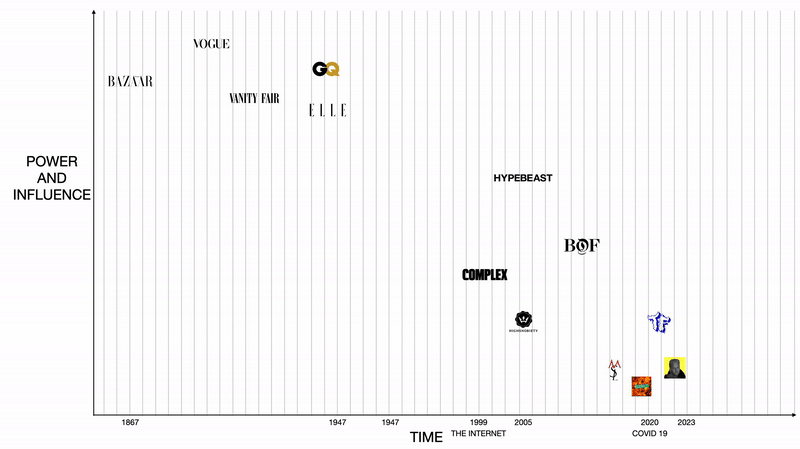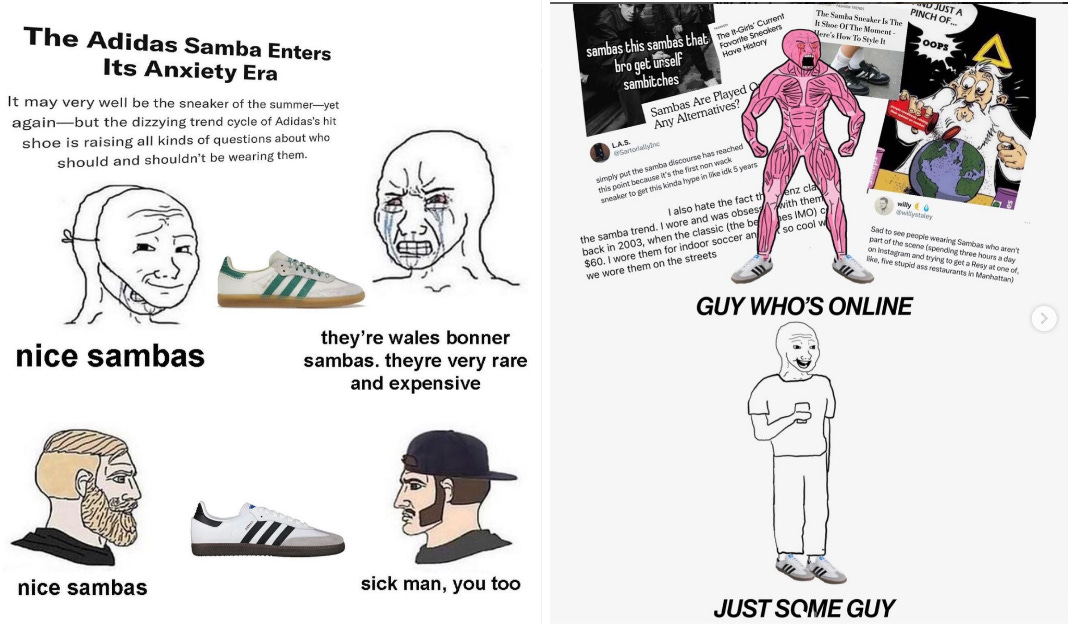It has not been a good time to be a media company these past few years. The world is drastically changing every day and the advent of the internet came crashing down on legacy outlets like the comet that killed the dinosaurs. However, there was no better time to be a new independent content creator, journalist, artist, brand, etc than during the COVID-19 pandemic. Not only did podcasting/substack explode during this time, but trust in news and institutions cratered as more and more people began to notice the vast extent of journalistic malfeasance endemic to the industry. Most of the power and influence used to be highly concentrated amongst a few big players. As the internet came along, and as we saw during the lockdowns, the power has rapidly decentralized. Rather than turning to specific outlets as their preferred destination for news or information, we are seeing people turn to specific individuals or personalities to hear their perspectives and interpretation of news events. The latest study conducted by Gallup and the Knight Foundation found that “a majority of U.S. adults turn to at least one public individual as a source of news and information… The data show that Americans report turning to their top public individual most because they like their personality (80%) or they trust them (79%). The next most cited reason for following their top public individual is, “They offer me a perspective I can’t find in traditional news outlets” (74%). Both personal appeal and a sense of trust outside of formal news organizations appear to be driving many Americans toward public individuals for information. However, there are important differences in why certain Americans turn to these individuals depending on age and political party identity.” Though this study is specifically talking about actual news outlets dedicated to politics and world events, the exact same scenario is playing out across the fashion industry for similar but different reasons. Young people in particular are gravitating towards individual personalities rather than organizations specifically for their entertainment value. The rise of independent content creators on IG + fashion TikTok as well as podcasts/meme accounts like Throwing Fits is a clear indicator that the power and influence once held by magazines such as Vogue and GQ have dwindled significantly. Vogue is down to just 10 print editions a year, and though both Vogue and GQ will continue to be big players within the industry, they won’t be the massive gatekeepers they once were. A profile in Vogue or GQ might move the needle for your brand a little bit and give you a sort of prestige legitimacy, but it’s not going to blow you up in the way a viral TikTok of someone like Wisdom Kaye wearing your brand could. They both serve different, important functions, but the chasm of influence between the behemoth organizations and content creators is closing by the day.
Memes are a massively overlooked form of communication and contain lots of psychographic data. Many fashion creators, journalists, and influencers alike use shitposting as a way to drive their social engagement and also provide fun cultural fodder for people to talk about. Many people in marketing haven’t truly grasped the power of memes and the information they convey. They look dumb on the outside, and most of the time they are but you can often glean valuable data about the way people are thinking about certain trends.
The power of these memes from Throwing Fits is not only that it’s funny or relatable but that they can and do genuinely influence purchasing behavior. Some people on the internet hyper-conscious of how they’re being perceived will be influenced by something like this and may or may not decide to buy Sambas because of it. Who’s really doing the bleeding edge niche cultural criticism and trendspotting these days? It sure as shit isn’t Vogue. Shitposters and meme accounts like Throwing Fits, Nolita Dirtbag, Northwest MCM Wholesale, and Meme Saint Laurent have regularly shown that the medium is the message, and increasingly, people on the internet look to meme accounts for their interpretation and often satirical commentary on cultural trends from things as silly as Jorts or Aesop Soap to more serious issues like gentrification. Memes and specific meme accounts are often just as powerful as the message they contain. People move to New York City and act like they’ve been there for years because of Nolita Dirtbag’s shitposting. The memeification of Dimes Square has reached mass audiences and this small, contained community is now recognized on a global scale because of who? Why is Indie Sleaze, which has roots in Dimes Square understood by people who live on the other side of the world? It’s because of the shit-posters. Trendspotting isn’t being done nor dictated by media outlets anymore.
For better or worse, podcasters and substackers have also become a go-to source for internet users eager to hear their favorite personality’s take on the news. The ascent of prominent independent news companies like Breaking Points and Rising by The Hill, or political streamers/podcasters like Chapo Trap House, Red Scare, Briahna Joy Gray, and Russell Brand, just to name a few, are proving to be big players in this new media landscape. Just recently, Jack Dorsey did his first interview post-Twitter sale on Breaking Points to discuss a variety of interesting topics. This is the future of news. And while legacy media continues to ignore and denigrate the Democratic primary challengers to Joe Biden, those candidates end up going on these shows or podcasts to broadcast their message to where a bulk of the real and younger audiences are flocking to. These are the new “late-night shows” of the modern day. Joe Rogan has a bigger audience than literally any corporation or individual in the world. Marianne Williamson, RFK Jr., and now Dr. Cornel West have done the smart thing as political outsiders and gone to more welcoming platforms like Breaking Points, Rising, and various podcasts to hopefully reach potential voters. This kingmaker-like behavior from legacy outlets fuels further dissatisfaction in mainstream media and on a larger scale, reinforces establishment and elitist policies, so people do the natural thing and flock to personalities that they like. People generally follow specific journalists, whichever one usually re-affirms their worldview. And although it’s nice to see corporate media outlets lose their monopoly on truth, ideally they should play an important role in the country. In a perfect world, we would just trust legitimate institutions to report on the news, and they would hold the truth up as their highest ideal. But we don’t live in a perfect world, and the truth is only a means to an end. On the other side of things, individual journalists and content creators are only capable of so much and basically serve to fill specific gaps of knowledge. Deep investigative journalism is now more and more rare. The brand of reporting Rolling Stone was so famous for; extensive profiles written by journalists (like Jonah at
) who often spent multiple days or weeks getting to know their subjects, is withering away. It’s not profitable anymore. On the art and fashion side of things, magazine outlets have lost their touch, though their influence was mostly lost as a result of their inability to adapt quickly enough to the internet and younger demographics’ changing media consumption habits. (Having said that, GQ’s video content is on point). A lot of magazines obviously do great work, but a bulk of their efforts and ultimately their power have been deeply influenced and reshaped by the attention economy. Now the media people within the fashion industry (shitposters, models/influencers, podcasters, writers) who have managed to build their own personal brands and platform through talent and determination can enjoy the fruits of their labor as the industry’s neo-gatekeepers and tastemakers alongside outlets like Vogue, GQ, Hypebeast, BOF, WWD, etc… Basically, if you are a content creator, you are a media brand. The table got much bigger and in my opinion, that’s a great thing.We all have fewer magazine subscriptions coming through the mail and more newsletters going to our Gmail (i miss magazines), so the best way new and existing brands can actually prosper in this day and age is to adapt quickly to the changing media landscape. Maybe instead of only paying Hypebeast for space on their website (which can only go so far), aspire to get a mention in an article or interview with someone like BlackBird Spyplane and Throwing Fits, or tap into fashion creators on IG/TikTok. That’s not to say a mention in GQ or the NYT style section won’t help you out, I just don’t think it really hits in the same way it used to. Individuals are the ones people look to for opinions now, not organizations. And it makes sense, it’s hard to retain superstar talent who people go to for their particular take when that talent can simply leave, bring their audience with them, and reap the profits. Look at all of the big publications like the NYT, WAPO, The Atlantic, etc. losing their key talent to substack. This is the direction everything is heading in as far as I can tell, whether you like it or not.







